Learning how to wear the casual blazer requires delving back into naval folklore. The story goes like this: in 1837, a young Queen Victoria paid a visit to a ship named the HMS Blazer, part of the Royal Navy. In preparation for the royal inspection, the ship’s captain ordered his crew to smarten up by wearing navy blue double-breasted jackets over their striped seamen’s sweaters.
The look (and the name) stuck. If it was good enough for Her Majesty, a blazer most certainly should be a part of your daily style arsenal. Despite its ubiquity, the tailored jacket offers a surprising amount of versatility too, louche and lax enough to be considered casual when it wants to be.
Taking the blazer beyond formal settings, we’ve assembled a complete guide on how to wear the casual blazer. Essentially, it’s about dressing things down for casual occasions, giving you a look that is still stately and clean, but has a more relaxed, fashionable feel. Still royal, never commoner.
In This Story…
The Rules Of Wearing A Blazer
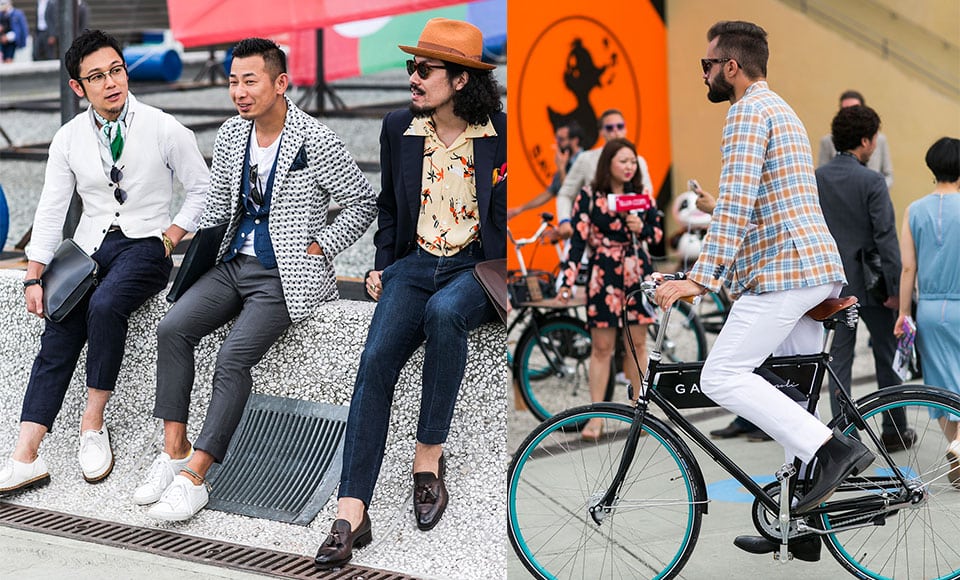
There’s a lot of blazer misdemeanours kicking around men’s style cyberspace these day, so let’s go over the blazer basic rules.
Don’t Make It Part Of Your Suit
This is one of those eye-for-detail moments. Even if looks like a perfectly ordinary jacket on the hanger, connoisseurs can always tell when a suit has been separated for its jacket. The jacket is too formal in finish and structure, obstructing the casual aesthetic you’re going for, throwing out the whole look.
Your Blazer Should Be Shorter In The Body
The traditional rule of thumb (literally) says that the hem of your jacket should hit around the thumb knuckle, the one between the end of your thumb and where the joint meets the palm. Your blazer should, like a good lawyer, cover your ass, but it shouldn’t be overly long either.
Your Blazer Fit Should Accommodate Additional Layers
A suit jacket is meant to fit just one (shirt) or two (shirt + waistcoat) layers underneath and is tailored accordingly. A blazer, on the other hand, should be fitted to allow for layering. When the cold weather hits, you’ll be thankful for the ability to layer multiple pieces, including knitwear, beneath your blazer.
Employ Different Colours, fabrics & Patterns
Don’t be afraid to get bold and creative, as that is often what marks the difference between good style and truly great style. Try out vibrant block colour blazers, classic prints and patterns like stripes and checks, and a range of different fabrics from linen to velvet. If you go this route, the blazer should be the statement, so make sure you exercise appropriate restraint elsewhere.
Have More Than One In The Wardrobe
This goes hand-in-hand with the previous rule. Your blazer collection is a chance to try out all kinds of different styles and brands. Fill your closet with a mix of inexpensive and pricier pieces, so you’re ready for anything. And don’t forget to shop well come sale time, as blazers are often the last items to go on sale.
Know Your Men’s Blazer Types
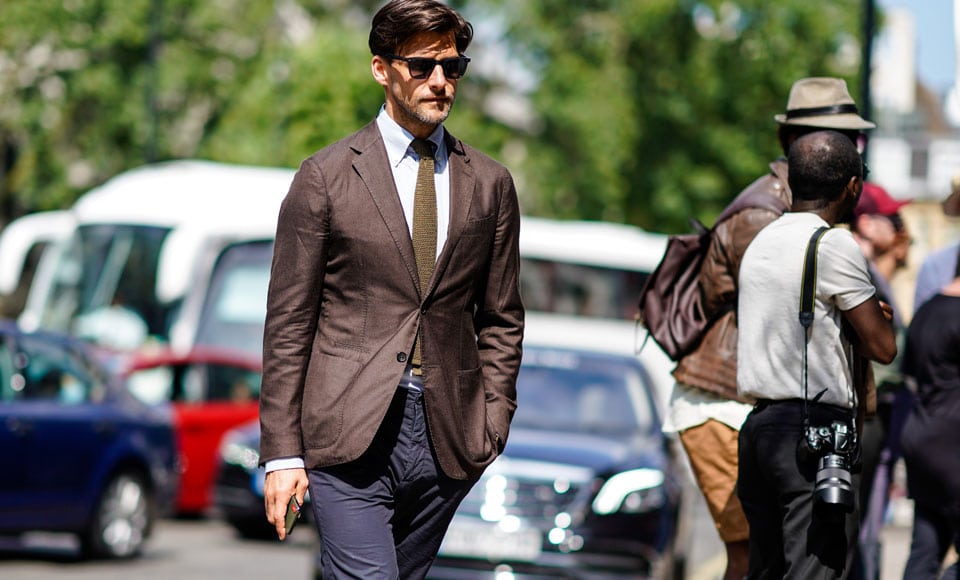
A blazer can be restrained and classy, a sharpener to any outfit. Otherwise, the blazer asserts your individual style and personal panache. Whatever you choose, knowledge is power. Here are the most common blazers for men on the market:
Cotton

Cotton blazers are the most common summer blazer. The lightweight and breezy fabric drapes over the shoulder and through the torso to the hips effortlessly, and it hold its shape well with shoulder pads or rounds nicely unstructured. Single or double breast, cotton feels cool in any colour really, but make sure cream or white and navy or charcoal get a mention in your blazer canon somewhere. Pairs with jeans or coloured chinos and sneakers like a glove.
Wool/Blend

Wool is a quality blazer fabric best suited to autumn and spring, when dressing for the inbetween seasons. A navy wool blazer is the ultimate classic, but it’s certainly not your only option. It’s neutral and dark colour makes it an instant symbolism of chic, while eschewing dandy-isms. Going along the spectrum, wool comes blended in both high-end (cashmere, silk) and low-end fabrics (polyester, cotton, elastane), meaning you have options pertaining to price and the feel and movement of your blazer. Rule of thumb: try before you buy.
Tweed
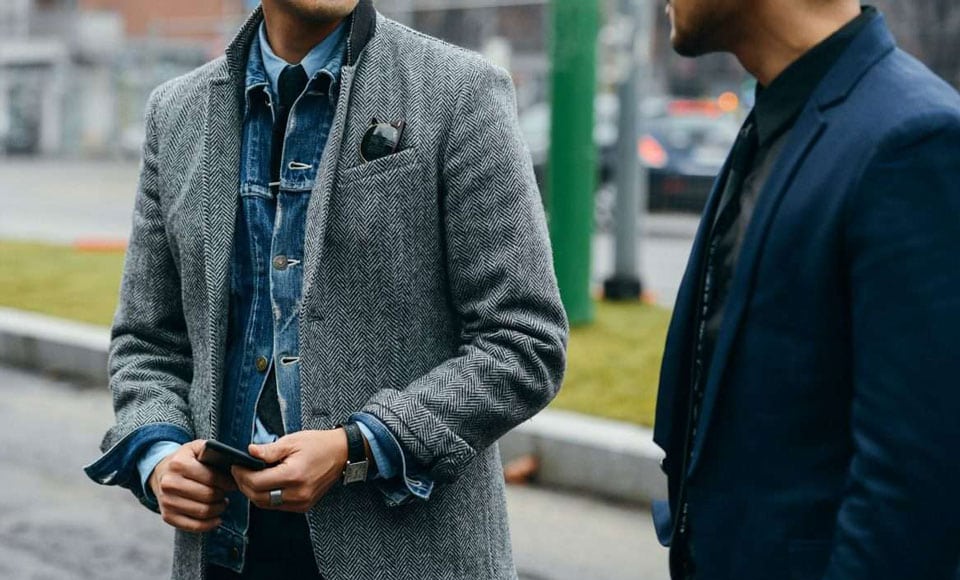
Tweed is a heavyweight fabric that is also best saved for cold weather. Tweed is practical, but still a stylish way to keep warm in the winter. Don’t be fooled by the old English chap character known to sport this jacket – the tweed blazer can be totally modern, especially for adding a little bit of texture to a flat or monochrome outfit.
Linen

The linen blazer is strictly summer and designed for a casual summer soiree where you’re likely to sweat in wool or cashmere. Easily crushed, which can be charmingly stylish if played out correctly (sleeve rolled and collar popped), linen fabric is incredibly lightweight and cool. Linen is ideally suited to casual unstructured blazers, paired with summer-white pants and an open-necked shirt, with sock-less loafers and a jaunty pocket square. Sail away, mate.
Colour Block
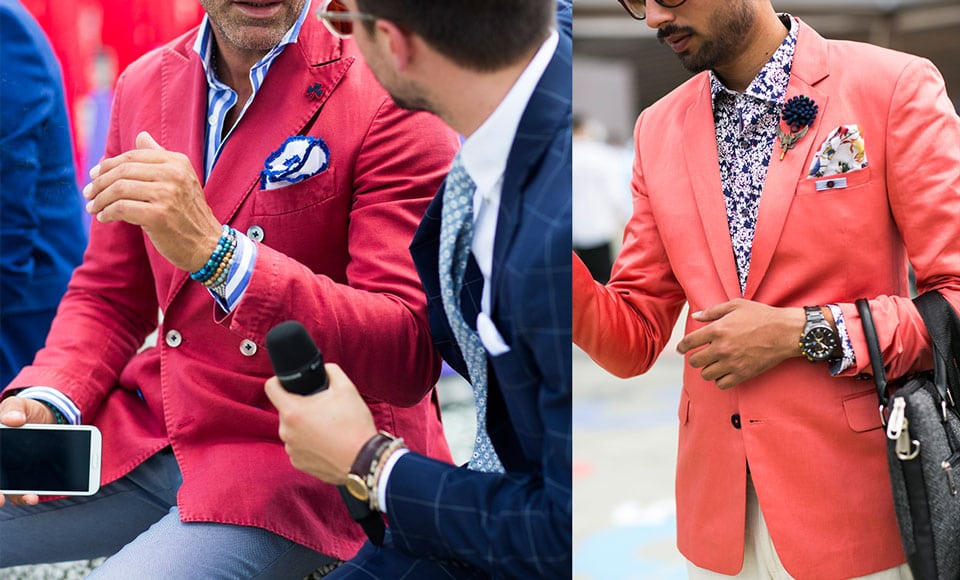
Summer is the time to get out the boldest, brightest colours in your arsenal. Work your way up the colour scale if you’re not ready to dive into the most daring tones. The safest bet is to anchor the look with neutral shades, but a patterned shirt is also a possibility if you really want to push the limits.
And, don’t forget to accessories: a beaded bracelet with a tone drawn for the colour if your jacket looks sharp, and a pocket square in a darker shade to your jacket gives the look some stability and cohesiveness.
Patterns & Checks

When it comes to patterns the possibilities are practically endless, which means there’s no shortage of opportunities to wear them. Regardless of the season, there’s a pattern that will look great. Stripes are a classic, preppy choice with heritage. Checks also make an outfit stand out. There’s no need to stick to restrained designs, so feel free to boldly go where ever your sense of style leads you.
Structured & Unstructured
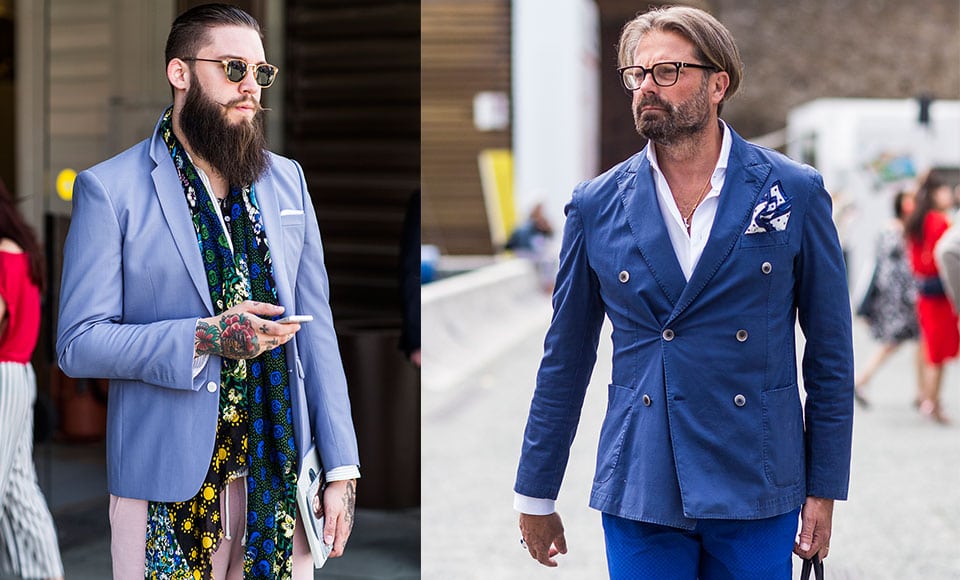
This is an easy way to distinguish between relaxed and formal. A structured blazer is sharp, clean cut and straight-laced. An unstructured blazer, on the other hand, is softer, flexible and more relaxed. Your wardrobe should include both structured and unstructured blazers for maximum versatility.
What To Wear With A Blazer – Winning Combinations
Blazer, T-Shirt & Jeans
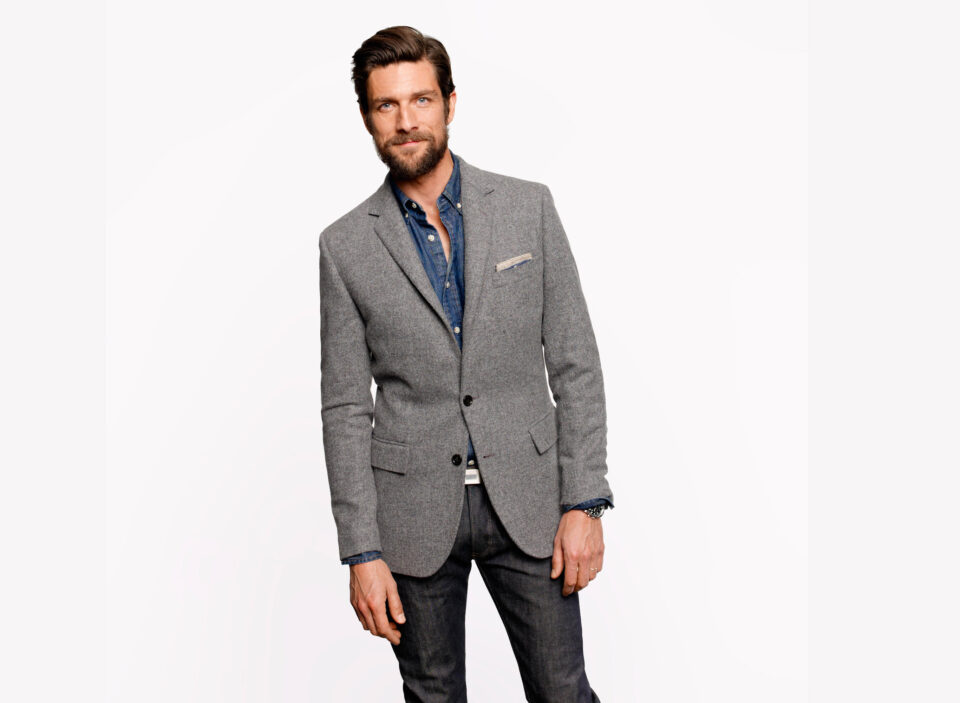 Dressing down the blazer? Evict the ever-present collared shirt and tie combo and move in a basic cotton t-shirt. But there are some rules: stick to plain (nothing patterned or printed), neutrals (white for day and black for nights) and make sure it’s a slim fit to avoid bulkiness. A round neck is a neater option, and stops the temptation of a plunging v-neck creeping under your coat. Finally, the t-shirt should end just past the waist, so nothing longline dangling past your jacket.
Dressing down the blazer? Evict the ever-present collared shirt and tie combo and move in a basic cotton t-shirt. But there are some rules: stick to plain (nothing patterned or printed), neutrals (white for day and black for nights) and make sure it’s a slim fit to avoid bulkiness. A round neck is a neater option, and stops the temptation of a plunging v-neck creeping under your coat. Finally, the t-shirt should end just past the waist, so nothing longline dangling past your jacket.
“The suggestion is ‘I’m comfortable’,” says Riley.
The t-shirt pairs better with unstructured blazers, as the structured type (canvas and lined) looks a little OTT with the laid back tee. As for your bottoms? Not trousers, but jeans, sticking with a dark wash in a slim (trouser-esque fit). Minimalist sneakers are a great street option or suede loafers for something a little smarter.
Blazer, Sweater, Shirt & Chinos
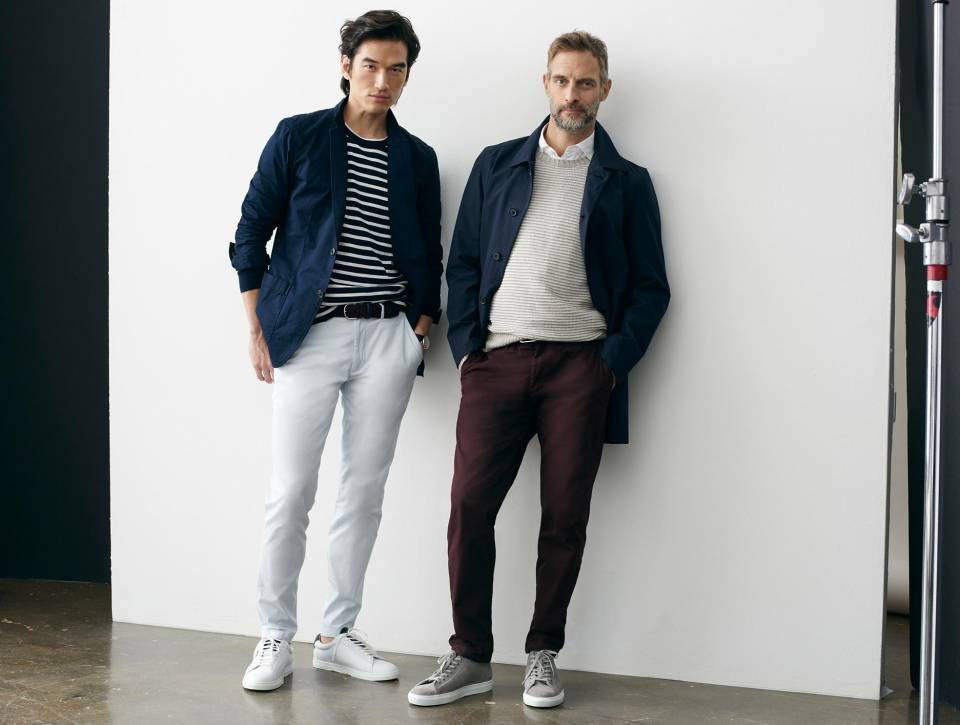 Perfect for casual Fridays or a smart Saturday lunch, this smarter blazer combination will vary slightly depend if it’s work or play that you’re about to embark on. Just be sensitive to dress codes, sticking to an unstructured blazer for this look, in a tasteful check (plaid, light windowpane or pinstripe) to stand out a little. Or forego patten and chose texture, says Riley: “Go for a more rustic surface, maybe a pure navy linen which has a lovely dishevelled nature.”
Perfect for casual Fridays or a smart Saturday lunch, this smarter blazer combination will vary slightly depend if it’s work or play that you’re about to embark on. Just be sensitive to dress codes, sticking to an unstructured blazer for this look, in a tasteful check (plaid, light windowpane or pinstripe) to stand out a little. Or forego patten and chose texture, says Riley: “Go for a more rustic surface, maybe a pure navy linen which has a lovely dishevelled nature.”
For weekends, lose the office-y tie and lighten the shade of your chinos: off-white or khaki are perfect off-duty shades. The blazer pairs well with a navy, brown or beige sweater (pastels can look too preppy) and a crisp Oxford shirt. Act up the sweater’s athletic vibe with sneakers, while in a workplace setting, opt for the classic approach – brogues or chunky sole derbies.
Blazer, Roll Neck & Wool Trousers
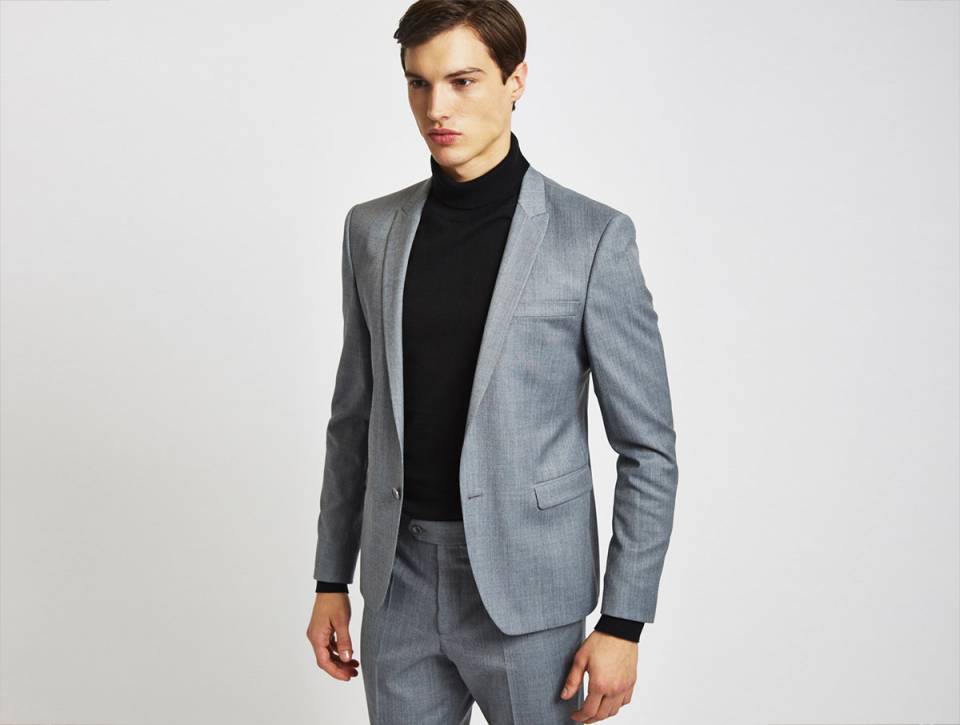 For winter, look no further than this season’s it knit, the roll neck. Like the aforementioned t-shirt, the roll neck does away with the need for a tie. But, it does need to be fine-gauge – nothing cable knit or chunky for layering purposes. Play around with intarsia geo-prints or jacquards for a statement knit or keep it neutral and let the texture do the talking. Texture creates visual interest in a tonal outfit, and pulls together opposing shades. This looks like a smooth finish navy blazer with a cream roll neck, and charcoal flannel or tweed trousers, opting for a darker shade for winter and formalities.
For winter, look no further than this season’s it knit, the roll neck. Like the aforementioned t-shirt, the roll neck does away with the need for a tie. But, it does need to be fine-gauge – nothing cable knit or chunky for layering purposes. Play around with intarsia geo-prints or jacquards for a statement knit or keep it neutral and let the texture do the talking. Texture creates visual interest in a tonal outfit, and pulls together opposing shades. This looks like a smooth finish navy blazer with a cream roll neck, and charcoal flannel or tweed trousers, opting for a darker shade for winter and formalities.
“I think the blazer can come as half of a navy suit if detailed and structured appropriately,” adds Riley. Again, shoes direct the outfit’s steps. Sneakers are Sunday friendly, while chocolate Derby boots or oxblood brogues create a look that is perfectly day-to-night.
Blazer, Suit Pants, Shirt & Tie, Dress Shoes
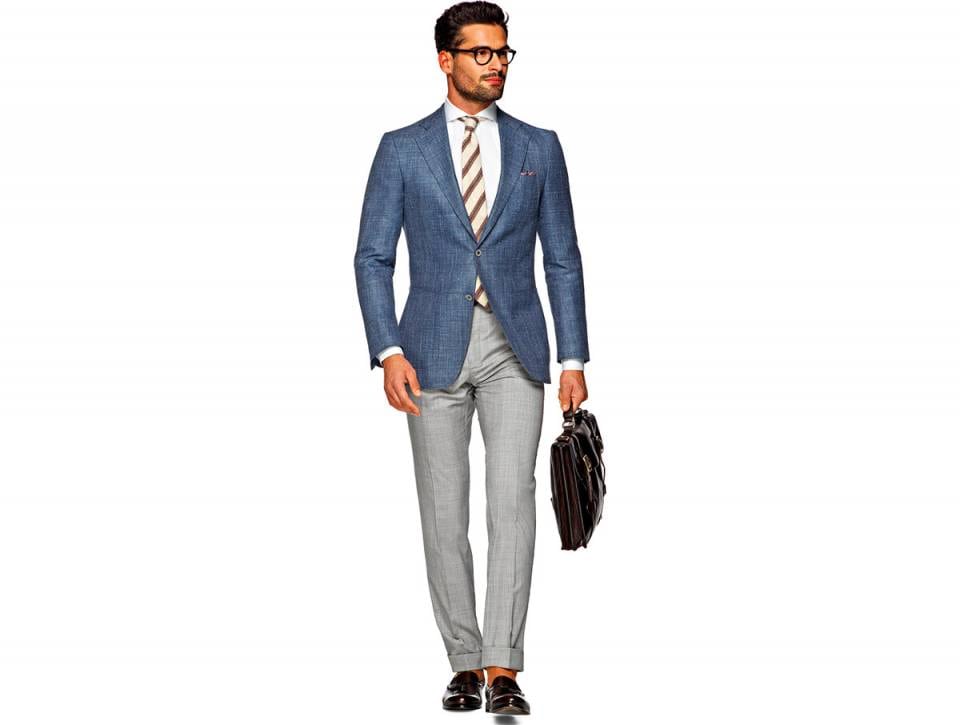 The formalities of the blazer mean its made for the office. But, nowadays stuffy corporate looks aren’t acceptable. “It depends on the character but a superfine merino with a soft structure can be very sleek and sharp yet has a generosity due to it’s softness,” adds Riley. While there is flexibility, stick to a charcoal or navy blazer and a crisp sky blue shirt (with a cutaway or straight point collar), opting for a subtle check in a dark colour if you prefer patterns.
The formalities of the blazer mean its made for the office. But, nowadays stuffy corporate looks aren’t acceptable. “It depends on the character but a superfine merino with a soft structure can be very sleek and sharp yet has a generosity due to it’s softness,” adds Riley. While there is flexibility, stick to a charcoal or navy blazer and a crisp sky blue shirt (with a cutaway or straight point collar), opting for a subtle check in a dark colour if you prefer patterns.
The no-fuss blazer makes it a solid base (not the feature), introducing accessories gently. “Keep the tie relaxed in a textured fabric or go a funky knit tie, opting for a patterned shirt if you like,” says Bagnato.
Avoid fanciful accessories/ such as the boutonniere or flower pin for the office, it’s a bit too Pitti Uomo-dandy. “But, if you’re not wearing a tie, always wear a pocket hankie,” says Bagnato. Want to jazz up your lapel? A subtle, metal tone lapel pin (matching your watch), which is much better.
RELATED: The Best Blazers For Men
Topman
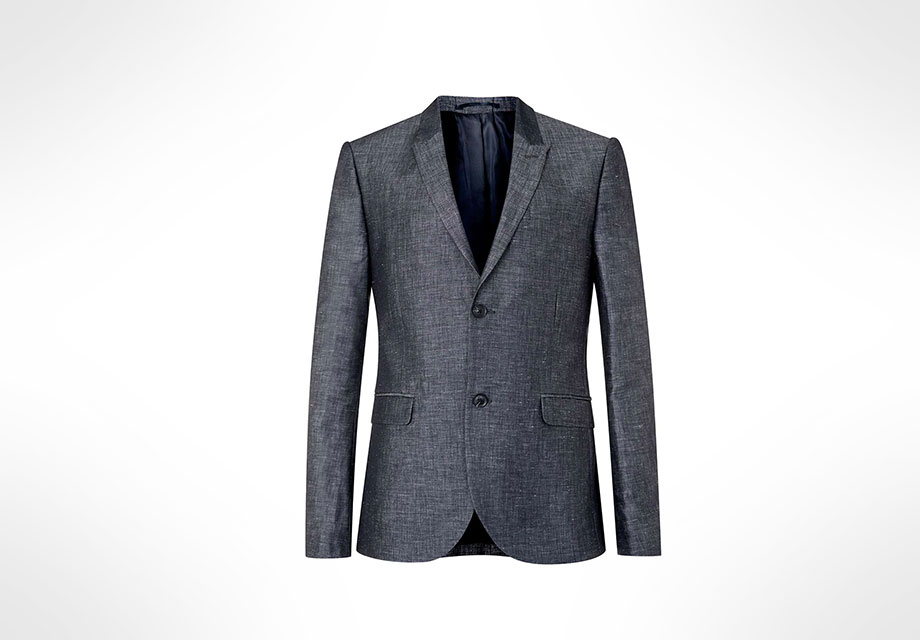 1/12
1/12
BUY
J.Crew
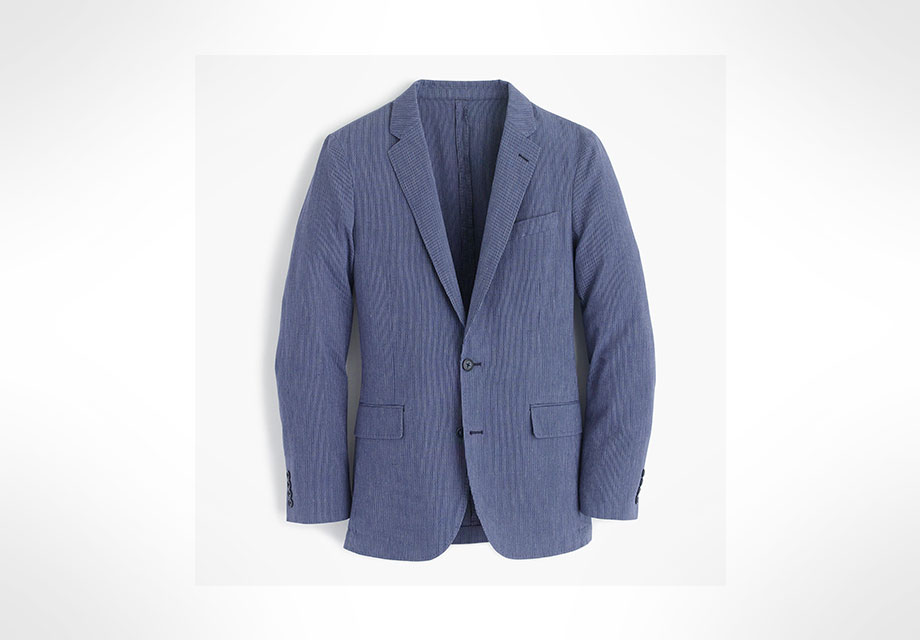 2/12
2/12
BUY
Reiss
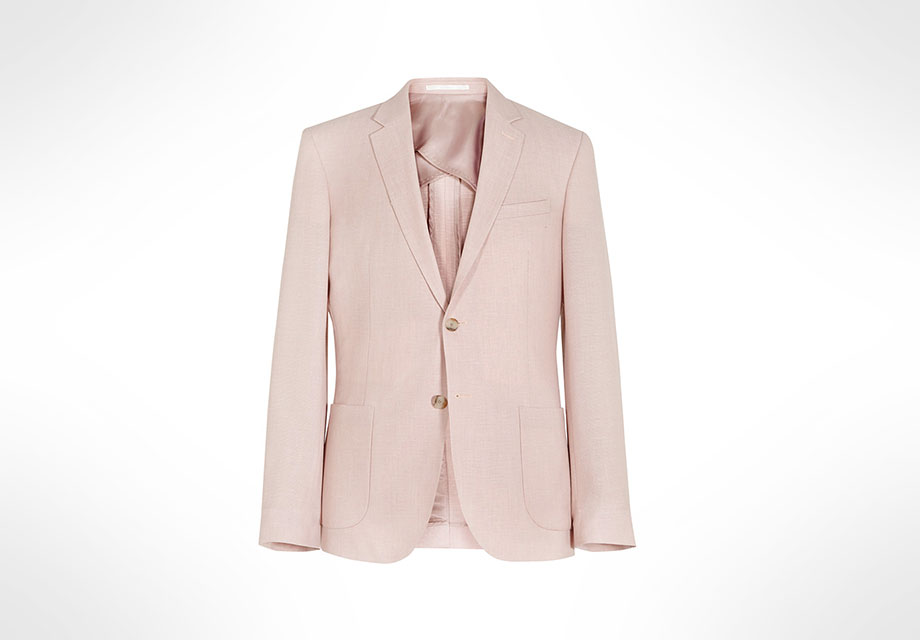 3/12
3/12
BUY
Suitsupply
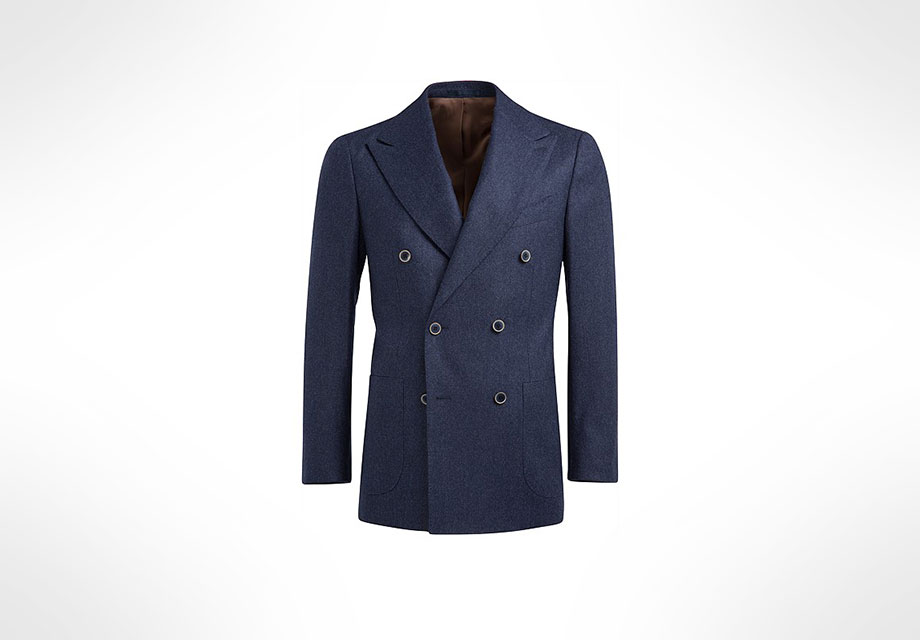 4/12
4/12
BUY
Canali
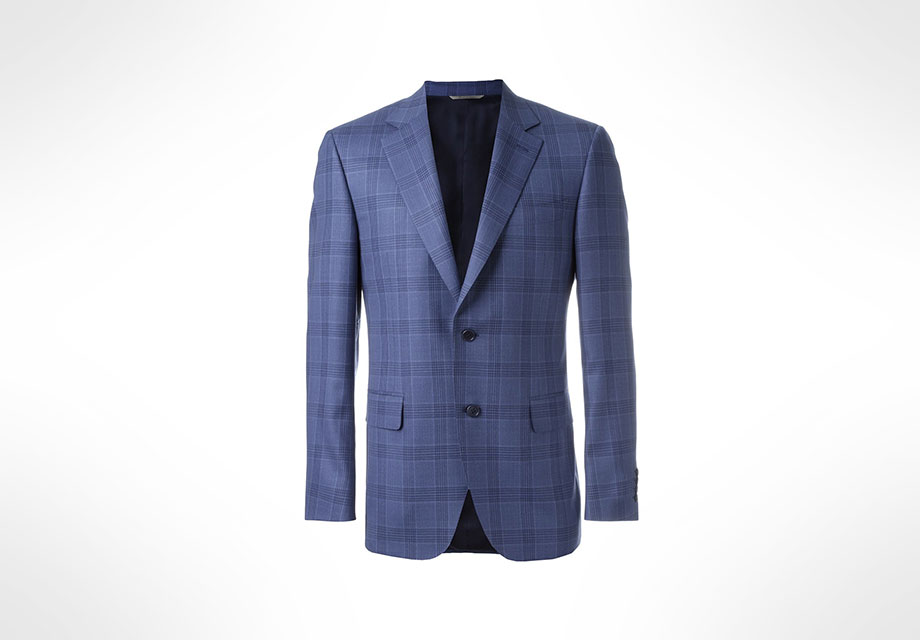 5/12
5/12
BUY
Paul Smith
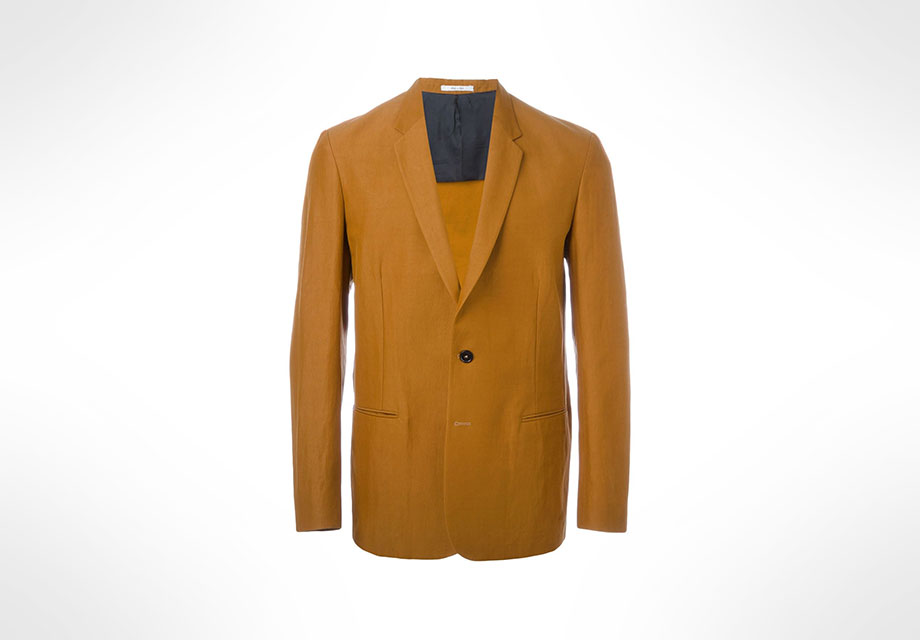 6/12
6/12
BUY
Ermenegildo Zegna
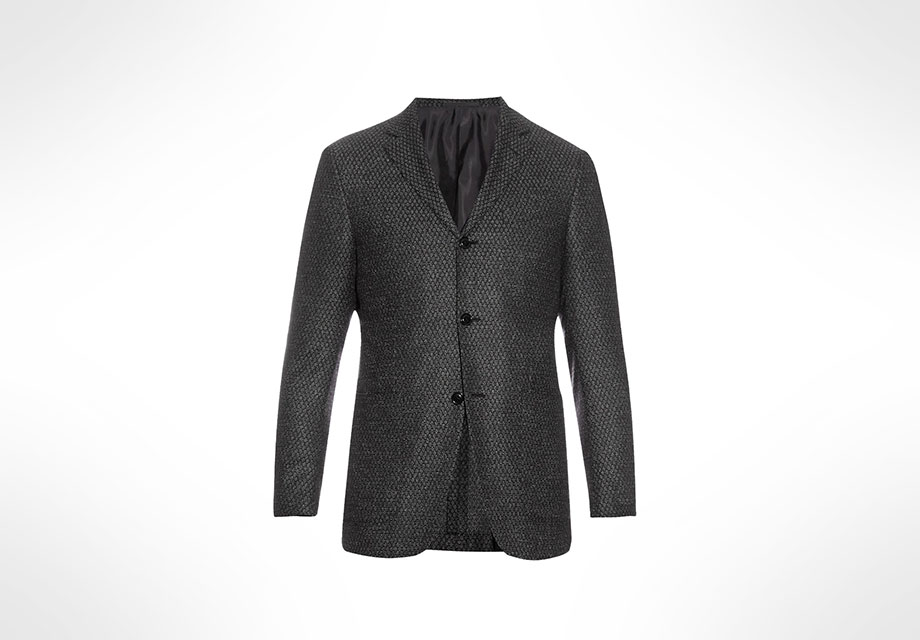 7/12
7/12
BUY
Arc'Teryx Veilance
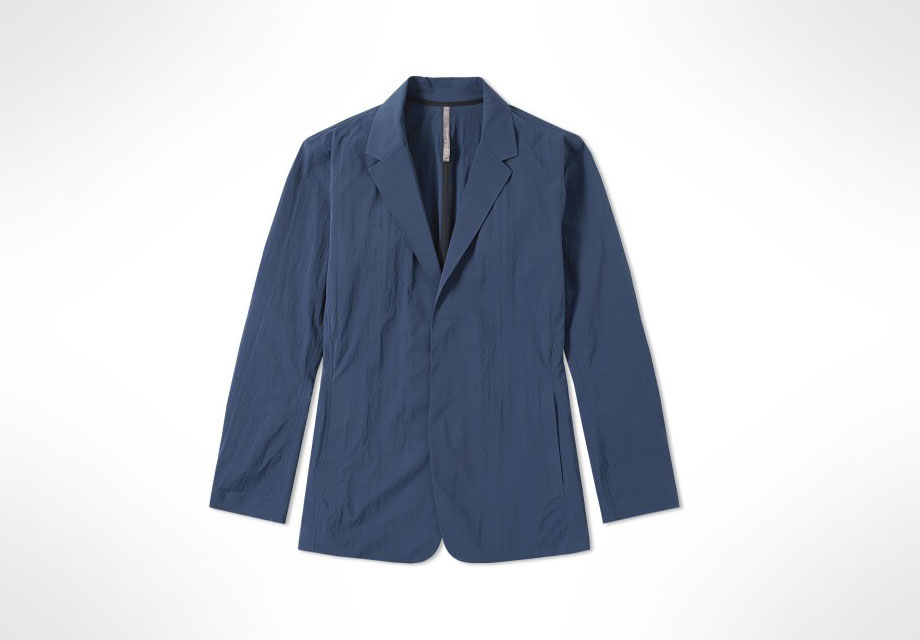 8/12
8/12
BUY
Saint Laurent
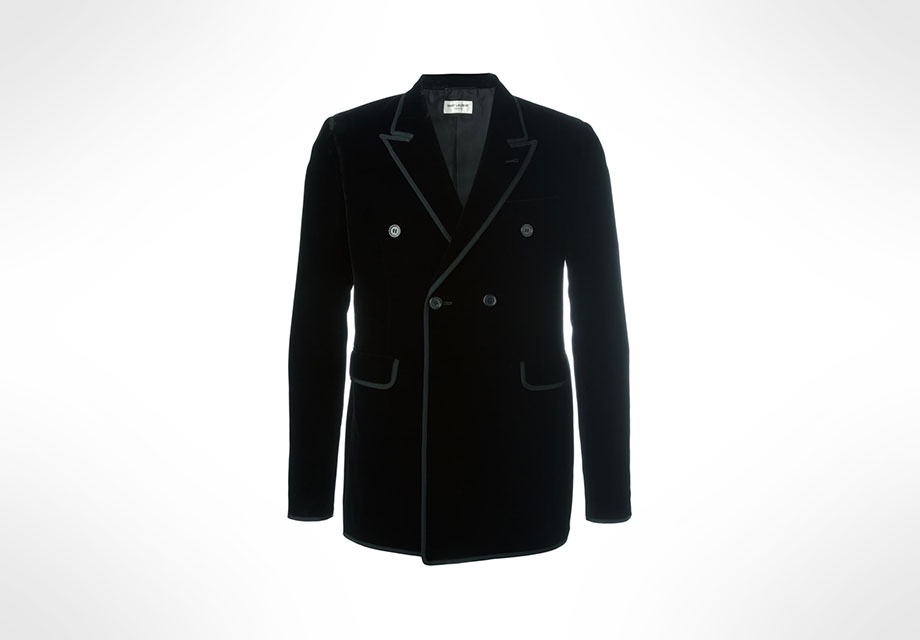 9/12
9/12
BUY
Giuliano Fujiwara
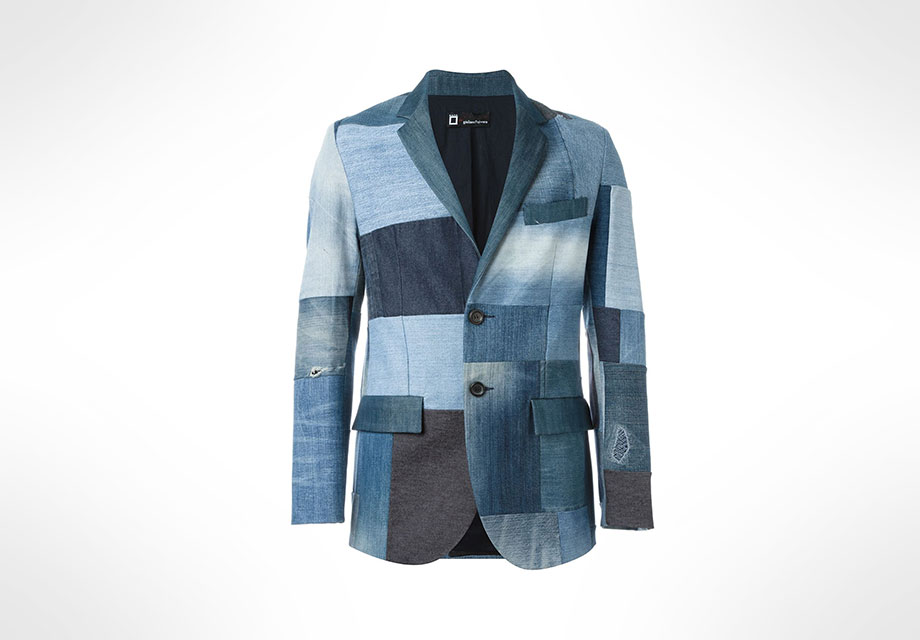 10/12
10/12
BUY
Brunello Cucinelli
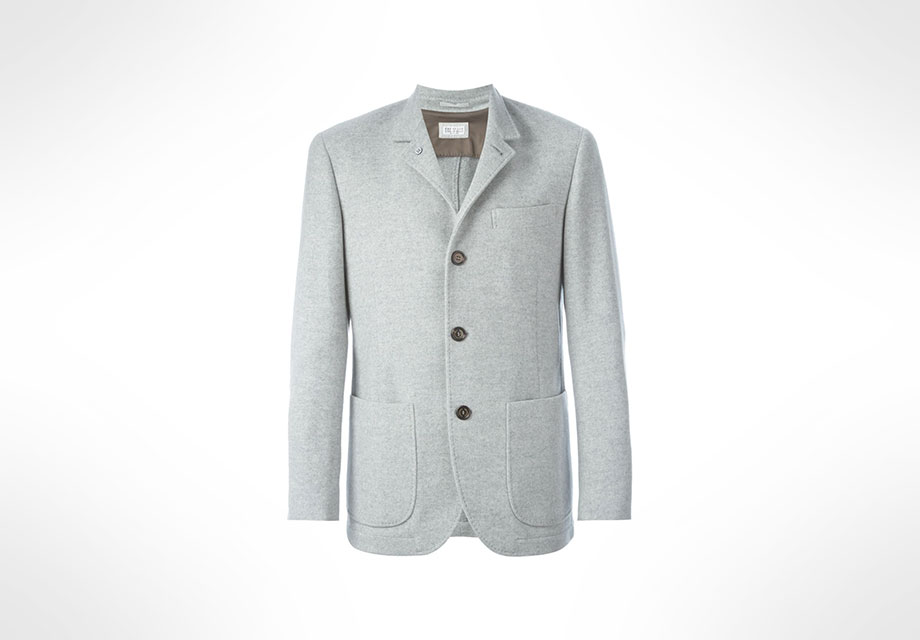 11/12
11/12
BUY
Vivienne Westwood
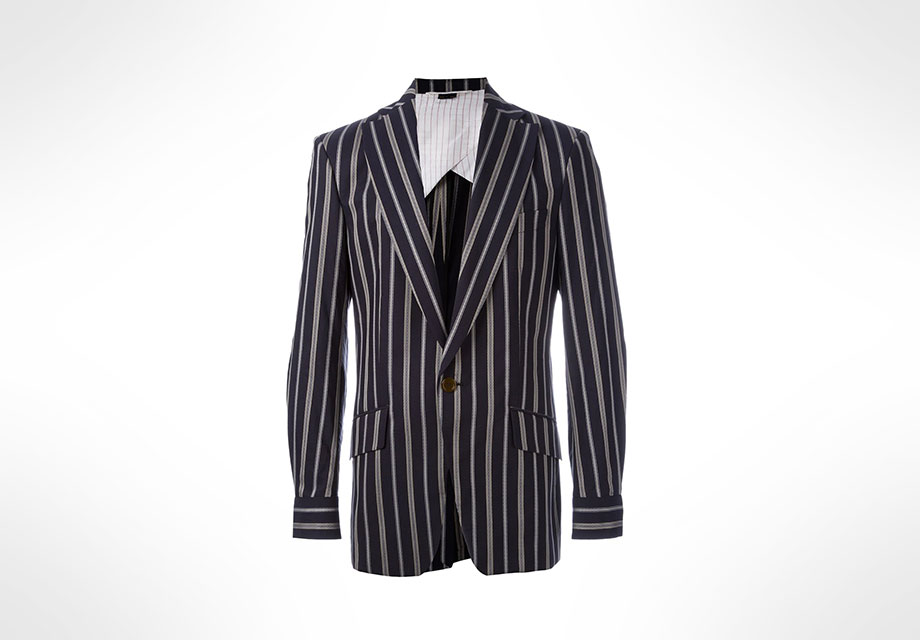 12/12
12/12
BUY